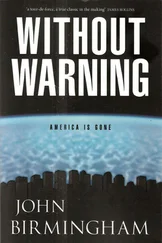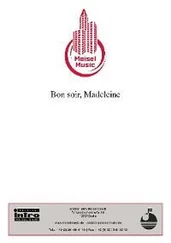That’s why Kim Il-sung developed a conventional military deterrent able to fire tens of thousands of rockets and artillery shells into the ROK in the first hour of any conflict. Most of those munitions would fall short of Seoul, but many have the range to reach the capital and beyond. Since 2016, the DPRK’s nuclear and missile programs have advanced with startling speed, using what appear to be Russian designs featuring more powerful rocket engines and smaller warheads. This arsenal, too, is almost surely intended as a deterrent, but a North Korea equipped with intercontinental ballistic missiles and deliverable nuclear arms is inherently an offensive threat.
“If we have to go to war, we won’t hesitate to totally destroy the United States.” So predicted Mun Hyok-myong, a thirty-eight-year-old North Korean teacher speaking to a reporter from the New York Times . Whether the North Korean military and the founder’s grandson, Kim Jong-un, share that delusion is hard to know, but every expression of fear on our part is welcomed as a victory in Pyongyang. I suspect that the newest Kim would face far greater resistance from his military if he tried to strike a deal than if he did not. North Korea is a poor habitat for doves.
When they met in the Oval Office soon after the 2016 election, President Obama told his successor that the DPRK would be the gravest national security challenge he would face. Trump has responded erratically. His first instinct was to count on China for help, a well-worn tactic that has yielded few benefits because North Korea doesn’t always listen to Beijing and because U.S. and Chinese interests don’t fully mesh. Trump said he would be “honored” to speak directly with Kim Jong-un, then decided that “talking is not the answer.” He rebuked his own secretary of state for opening the door to negotiation, then apparently thought it smart to engage in a war of taunts with the DPRK leader, referring to Kim as “Rocket Man… on a suicide mission” and promising to obliterate North Korea should America be attacked. He has both adamantly opposed, and warmly endorsed, direct consultations between North and South. He restored Pyongyang to the list of state sponsors of terror—not a meaningful gesture—and urged all countries to sever relations with the DPRK, which many will not do. In addition, if reports are accurate, he has given considerable thought to a preemptive military strike.
We live with the possibility that DPRK provocations, Trump’s impatience, or a technological accident or human misunderstanding will lead to a violent outbreak despite the immense peril to people on both sides of the 38th parallel. We have, after all, had close calls before, when tensions were not so fraught and leaders were more experienced. A less dire eventuality, though still unsatisfactory, is continued stalemate, with the parties snapping at each other, but neither one so angry or fearful as to take the first bite.
For now, missile defense, solidarity among allies, and economic pressure must remain at the core of U.S. policy. The third of these tools, international sanctions, has a mixed record of effectiveness. On the plus side, sanctions helped to end apartheid in South Africa and to derail nuclear programs in Libya and, under the 2015 agreement, Iran. North Korea is vulnerable to such penalties due to its relative isolation, but at the same time resistant because its population has grown accustomed to improvising and, if necessary, doing without. The government has also forged alternative revenue streams that include profits from cybertheft, smuggling, and a big share of the wages earned by citizens working abroad. North Korea is poor but almost certainly not so desperate that Kim can be coerced into bargaining away the nuclear program his father and grandfather spent the past three decades assembling.
The question then arises: How great is the likelihood of disruption to the regime from within? The information revolution has not permeated the DPRK, but it has penetrated. If accounts from refugees are accurate, North Koreans no longer believe much of what they are told by the government. They doubt, for example, that their pampered young leader, Kim Jong-un, really learned how to shoot a gun at age three and ride a horse at five. Official salaries are so low that many people see no other option but to steal what they can, thus undermining the culture of obedience. Cynicism is widespread but that sentiment is more likely to translate into a desire to leave—which requires daring—than a plan for organizing internal opposition, which seems more like suicide. There have been greater surprises in history, so a sudden collapse of this house of cards cannot be ruled out, but odds are better that if the North Korean system evolves, it will do so slowly.
This doesn’t mean that diplomacy is hopeless; indeed, the door to negotiations should always be kept open. The DPRK could decide to accept international inspections and freeze or slow down the development of its nuclear and missile programs, provided it receives something in return that its leaders can crow about—such as sanctions relief and a suspension or redesign of joint military exercises by the United States and South Korea. Further down the road, diplomatic tools might, if artfully employed, eventually bring about a formal end to the Korean War, the normalization of relations, and ultimately—in return for credible security guarantees—the denuclearization of the peninsula. These objectives are unrealistic at present, but circumstances never stop changing and what is unreachable today may fall within our grasp tomorrow if we are ready. We should be, because it is hard to imagine worthier goals.
THE CONFRONTATION ON THE KOREAN PENINSULA POSES A SIGNIFICANT risk of war, but even should that cataclysm be avoided, the cost to humanity of DPRK Fascism is beyond any scientific measure. North Koreans are born and grow up in a society where ideological loyalty to the regime determines where and how well they live, the jobs they have, and whether they will be among the 40 percent of the population that is chronically malnourished. Citizens who are detained for political reasons or common crimes alike are consigned to vast prison camps in remote areas and may be tortured, worked to death, or starved. A person accused of a crime may be executed, in public, without trial, as may his or her family. Women and girls who are abused by government officials, prison guards, and police have no recourse. Food is used to reward docility and withheld to punish any sign of an independent spirit. The practice of religion is prohibited. Possessing an electronic device with international reach is a crime. Surveillance is nonstop, as is the propaganda blasted from loudspeakers set up in apartment buildings and village squares.
Visitors to North Korea often report that the people there seem happy. Years ago, in military-run Burma, I heard the same story from the generals who ruled then with an iron fist. “Look around,” I was told. “Everyone is smiling.” I thought, well, sure, but people often smile out of fear. I don’t know what would happen should a free and fair election ever take place in the DPRK. We do know that when the Burmese were finally given a chance to vote, the democratic opposition won more than 85 percent of the parliamentary seats at stake. We know, as well, that North Korea today has an estimated 100,000 political prisoners, more than any other country—not a symptom of contentment.
We have grown accustomed to speaking critically about the repression of civil liberties wherever such violations take place; but in North Korea, we must ask whether something can be repressed that has never been allowed. The DPRK is a secular ISIS; its existence provides further evidence of the tragedy that can result when power is concentrated in the hands of too few for too long.
Читать дальше
Конец ознакомительного отрывка
Купить книгу












